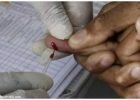The more and more versatile offer of nutritious products is grounded precisely on the application of additives: without sweeteners and emulsifiers, there wouldn’t be any “light” products, processed cheese couldn’t be made without emulsifier salt and the half-prepared or already prepared meals couldn’t be made without preservatives, antioxidants, stabilizers and other additions.
The emulsifiers are an integral part of food production, so they can still be found in many products. They are used to make the product look more attractive and taste better. Emulsifiers can be mostly found in candies, snacks, sparkling drinks and preserved products.
Colors make the products more attractive for the human eye. The things that improve the taste in case there are less natural ingredients in the product – they make it tastier. Preservatives give longer product durability. Artificial sugars are used on diet food and drinks.
These are the additives to which you should pay special attention because of their adversity:
Side-effects: difficult breathing and rash. It can be found in almost every sauce.
E 104, yellow color: It’s forbidden in the USA because of suspicions that it’s carcinogenic.
E110, orange color: Animal researches showed that there was a high frequency rate of the appearance of kidney tumors and the allergic reaction to that color can appear as a rash or asthma.
E122, azorubine: Red color which causes allergic reactions like E 110.
E 123, amaranth: Red color often present in aperitif wines. Animal researches have shown that it can cause calcium deposits in the kidneys. It’s forbidden in the USA because of suspicions that it’s carcinogenic. Pay special attention to it. It can be also found in gummy bears and candies, chocolate candies, cream pudding in plastic cups, certain kinds of frozen fish, processed cheese spreads, vanilla pudding…
E 127, erythrosine: Red color which is often the ingredient of cherry and sour cherry cocktails, as well as candied fruit. It can also have an effect on the function of your thyroid gland.
E 142, green S: Green color for which there are suspicions that it stimulates the development of Alzheimer’s disease.
E385, calcium disodium: It can be usually found in jars and cans with vegetables and fish, as well as frozen shrimps. It can harm your metabolism.
E 425, cognac: It can disturb the absorption of nutrients.
E 512, zinc chloride: It can be found in cans and jars with white vegetables. In high concentrations, it can cause sickness and vomiting.
E 621, monosodium glutamate: It enriches the flavor, for example of soups and the main problem is a possible genetic production.
E 999, quillaia: It can cause intoxication and can be found in non-alcoholic beverages like apple wine.
E 1520, propylene glycol: A solvent and preservative which can mostly cause intoxication.
Source:
www.beextrahealthynow.com




